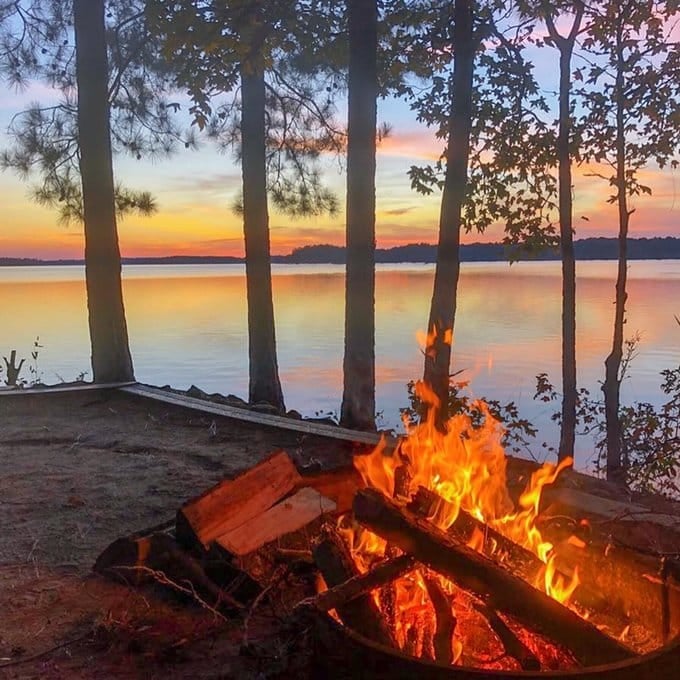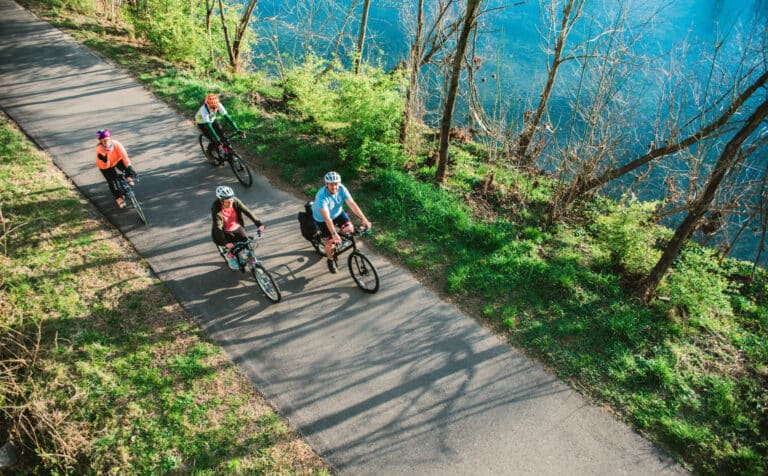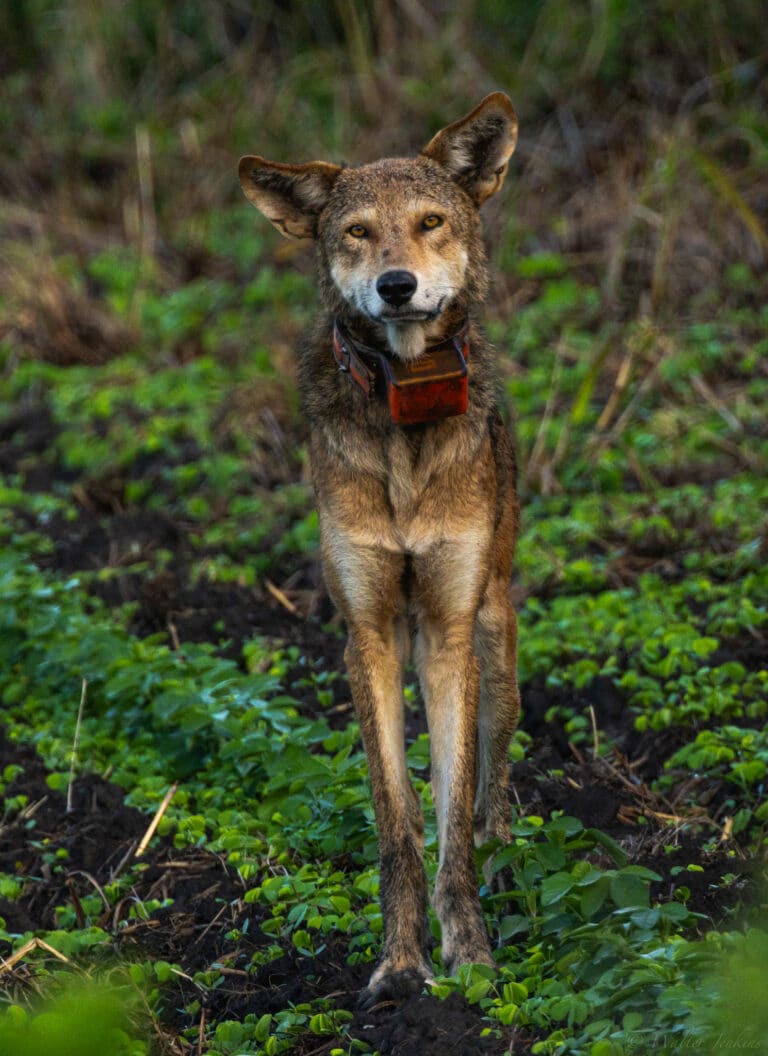School’s in session on raging whitewater. The New River Academy develops scholar-paddlers through world-class immersion.
It’s 7:30 a.m. on the western coast of Chile, and ten American high school kids are doing pushups and situps on a grassy lawn near the banks of the Rio Achibueno. Kayaks are spread out on the grass beside the bamboo huts the kids call home.
After the pushups, the kids will huddle around a wood stove for breakfast, then they’ll break into smaller groups for morning classes: three periods of typical high school academics like World Literature, Algebra II, Physics. There are no classrooms, so a living room hosts the Shakespeare discussion and the kitchen becomes the science lab. Afternoon classes are similar, with students breaking into small groups for hour-long classes led by young teachers carrying books and dry-erase boards. Then, at 3 p.m., everyone goes kayaking. Boats are loaded onto trucks, and everyone is shuttled up the Achibueno for an afternoon of tackling some of the world’s wildest whitewater.
 These kids are attending the New River Academy, a private school for kayakers and arguably the world’s most alternative high school. Every year, in August, a dozen teenagers ranging in age from 14 to 18 rendezvous in Canada to study and paddle the Ottawa River for a month. Then they go to the New River Academy’s base in Fayetteville, West Virginia for Gauley season. Then they go to Chile for two months of paddling, school, and Spanish immersion. For the spring semester, they’ll go to Uganda. The students take regular classes during the school day, but when the bell rings, instead of playing video games or going to basketball practice, they paddle some of the world’s most famous rivers.
These kids are attending the New River Academy, a private school for kayakers and arguably the world’s most alternative high school. Every year, in August, a dozen teenagers ranging in age from 14 to 18 rendezvous in Canada to study and paddle the Ottawa River for a month. Then they go to the New River Academy’s base in Fayetteville, West Virginia for Gauley season. Then they go to Chile for two months of paddling, school, and Spanish immersion. For the spring semester, they’ll go to Uganda. The students take regular classes during the school day, but when the bell rings, instead of playing video games or going to basketball practice, they paddle some of the world’s most famous rivers.
The New River Academy was founded and designed by David Hughes, a former public high school teacher and pro kayaker who wanted to provide a better educational model than the standardized approach that dominates public schools in America.
“I saw the problems first-hand. The educational system I was teaching in just wasn’t working,” Hughes says. Fifteen years ago, Hughes was teaching and coaching wrestling in a North Georgia public school. During his first year of teaching, he was voted Georgia’s coach of the year, but he was completely dissatisfied with the school’s oversized classes, standardized curriculum, and stale teaching approaches. He left to teach for Adventure Quest, an alternative high school based in Vermont that took the kids’ education on the road to Africa, Nepal, and New Zealand. Adventure Quest dissolved, but Hughes saw how a different educational approach focusing on low student-to-teacher ratios, cultural immersion, and the use of adventure sports as a motivational and educational tool could have a dramatic effect on kids.
 “It’s colored the rest of my life,” says Melina Coogan, a former Adventure Quest student who later became a teacher at the New River Academy. Coogan spent her junior and senior year in the Adventure Quest rock climbing program, taking advanced placement classes and climbing crags in Europe, Mexico, New Zealand, and the American Southwest. “It was like one big road trip with killer academics. I think about that opportunity every day, how different my life is because of it. It gave me so many life skills beyond rock climbing and math. I remember at one point, I was on a week-long hike in New Zealand. I had my iodine, food, and sleeping bag on my back and I realized I had everything I needed to survive. How many high school kids get to experience that feeling?”
“It’s colored the rest of my life,” says Melina Coogan, a former Adventure Quest student who later became a teacher at the New River Academy. Coogan spent her junior and senior year in the Adventure Quest rock climbing program, taking advanced placement classes and climbing crags in Europe, Mexico, New Zealand, and the American Southwest. “It was like one big road trip with killer academics. I think about that opportunity every day, how different my life is because of it. It gave me so many life skills beyond rock climbing and math. I remember at one point, I was on a week-long hike in New Zealand. I had my iodine, food, and sleeping bag on my back and I realized I had everything I needed to survive. How many high school kids get to experience that feeling?”
After Adventure Quest dissolved, several parents asked Hughes to continue coaching and teaching their kids, so Hughes opened the Huge Experiences kayak camps and began the process of seeking accreditation as a college preparatory high school. He was 29 years old and trying to start a high school where kayaking was the school sport, and international travel was an integral part of the education.
“Initially I got a lot of rejections,” Hughes says.
 In 2001, Huge Experiences aligned with an existing school and took two students to Ecuador for the first semester of classes. By the next year, the school had grown to 13 students. That same year, students from the Academy of Huge Experiences grabbed nine of the 10 seats on the U.S. Junior Kayaking Team. Hughes eventually changed the school’s name to the New River Academy, but the kayaking success of his students has never wavered, with a school roster that’s stacked with Canadian and U.S. national team members. Last year was probably the most successful year ever for the Academy, producing a Junior World Champion, the male and female Junior U.S. Champions, and the male and female Junior Canadian Champions.
In 2001, Huge Experiences aligned with an existing school and took two students to Ecuador for the first semester of classes. By the next year, the school had grown to 13 students. That same year, students from the Academy of Huge Experiences grabbed nine of the 10 seats on the U.S. Junior Kayaking Team. Hughes eventually changed the school’s name to the New River Academy, but the kayaking success of his students has never wavered, with a school roster that’s stacked with Canadian and U.S. national team members. Last year was probably the most successful year ever for the Academy, producing a Junior World Champion, the male and female Junior U.S. Champions, and the male and female Junior Canadian Champions.
“Our typical student comes to us through one of the junior kayaking camps, like the NOC camp, or Ottawa Keeners Camp in Canada,” Hughes says. “Sometimes, they’re boaters running class III-IV water looking to train so they can compete. Sometimes, they just want to master the kayak roll and have a different experience.”
Regardless of skill level, a passion for the sport is innate in every student, and it’s virtually required to succeed at the school. Students and teachers kayak for at least two hours a day, every day. Sometimes, the group will put in two-a-days, with one session in the morning and a second session in the afternoon. They’re moving from one river to the next, constantly progressing their boating skills in the world’s best freestyle, creeking, and waterfall destinations.
 “I went in as a class III paddler with some runs on the Ocoee, Nolichucky, and Nantahala under my belt,” says Nathan Silsbee, an Academy alum who discovered the school through the NOC’s junior kayak camp. “I came out a solid class V boater able to paddle the Green with confidence. You paddle with instruction every day. It’s almost impossible not to progress exponentially in that school.”
“I went in as a class III paddler with some runs on the Ocoee, Nolichucky, and Nantahala under my belt,” says Nathan Silsbee, an Academy alum who discovered the school through the NOC’s junior kayak camp. “I came out a solid class V boater able to paddle the Green with confidence. You paddle with instruction every day. It’s almost impossible not to progress exponentially in that school.”
Silsbee became a sponsored pro boater almost immediately out of high school, which he says is the goal of almost every student at the Academy. “I remember when the first student got a sponsorship while I was there. It was such a big deal to all of us.”
Surprisingly, few of the Academy’s graduates carry on with competitive kayaking after school. “Kids probably do seek us out looking for that glamorous, sponsored pro kayaker life,” Hughes says. “But only a minority of our kids go on to competitive kayaking. Don’t get me wrong, I’m passionate about kayaking, but that’s not what’s great about our school. The education is what’s great. Kayaking is just a tool for that education.”
It’s probably hard for many people to believe that a school can travel around the world to exotic locations, kayaking almost every day of the week, and still deliver a solid education, but that’s exactly what Hughes has managed to accomplish with the New River Academy. Parents shell out $18,800 a semester for their child to attend the Academy, but they see results.
“It’s frustrating, but my friends and family still think the Academy is just a really expensive summer camp,” Melina Coogan says. “It’s easy to assume this is just a bunch of rich kids running around the world. But these kids aren’t on some extended vacation. They study, kayak, sleep. That’s about it. The education they get while kayaking in Chile or Uganda is amazing.”
And the school has the statistics to back up that claim. Ninety percent of their students not only graduate, but go to college. Hughes credits the school’s academic success to the small class size. He keeps the academy’s enrollment to a maximum of 14 students per semester, with five full-time teachers, so classes never go beyond a student-teacher ratio of three-to-one.
 “You know the difference a great teacher can make in a classroom with 30 kids? Now imagine that great teacher in a classroom with three kids,” Hughes says.
“You know the difference a great teacher can make in a classroom with 30 kids? Now imagine that great teacher in a classroom with three kids,” Hughes says.
Silsbee says his parents were convinced his interest in the Academy was just an excuse to go kayaking around the world, but the more they learned about the educational model in the school, the more impressed they were. “If there were 15 kids in a class, and school was in Costa Rica, and you were kayaking every day, this school wouldn’t work. But with a two-to-one ratio, students won’t fall behind. Teachers are there every step of the way. You spend 24 hours a day together. There’s no room for failure.”
In addition to traditional classes, New River Academy students also take survival training, learn leadership skills, get paired with teacher mentors for specific projects, create video and photo portfolios, blog regularly, undergo Spanish immersion classes, and take turns cooking for the entire staff and school. On days that they don’t kayak, the school might hike a volcano, or rock climb, all the while being immersed in a completely foreign culture.
“It’s an educational experience just being in a different country,” Silsbee says. “This school is not just about kayaking.” •







